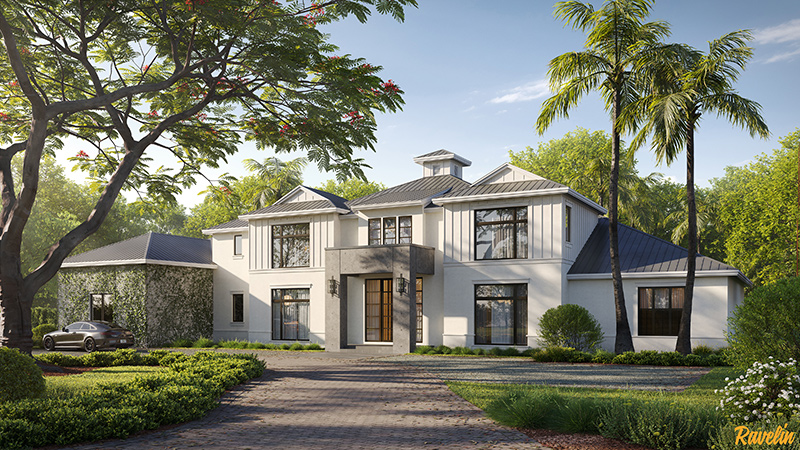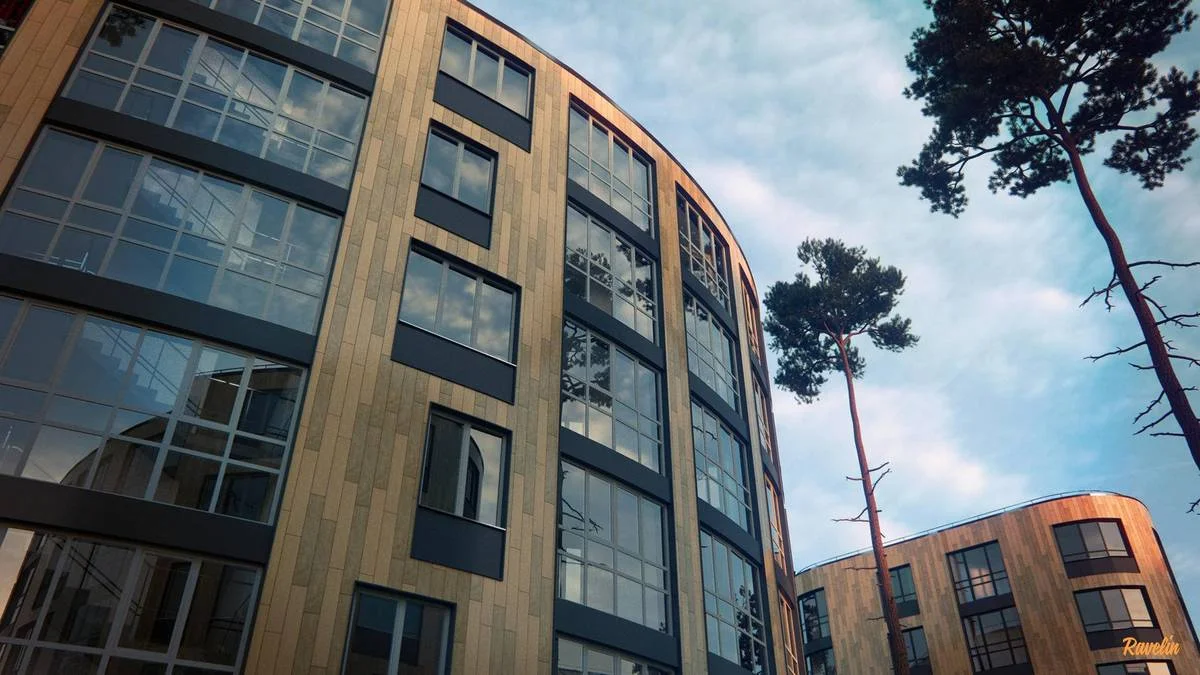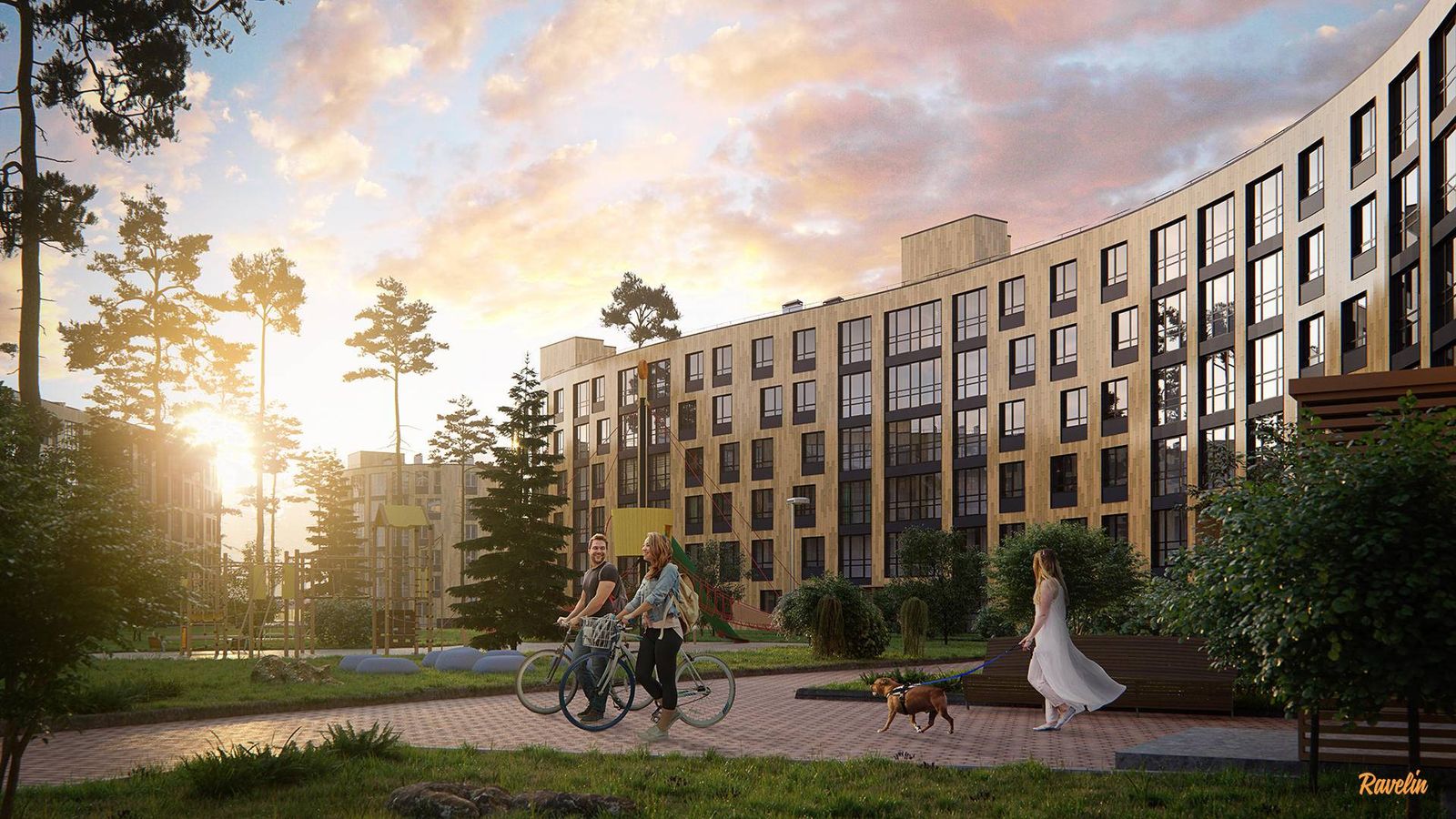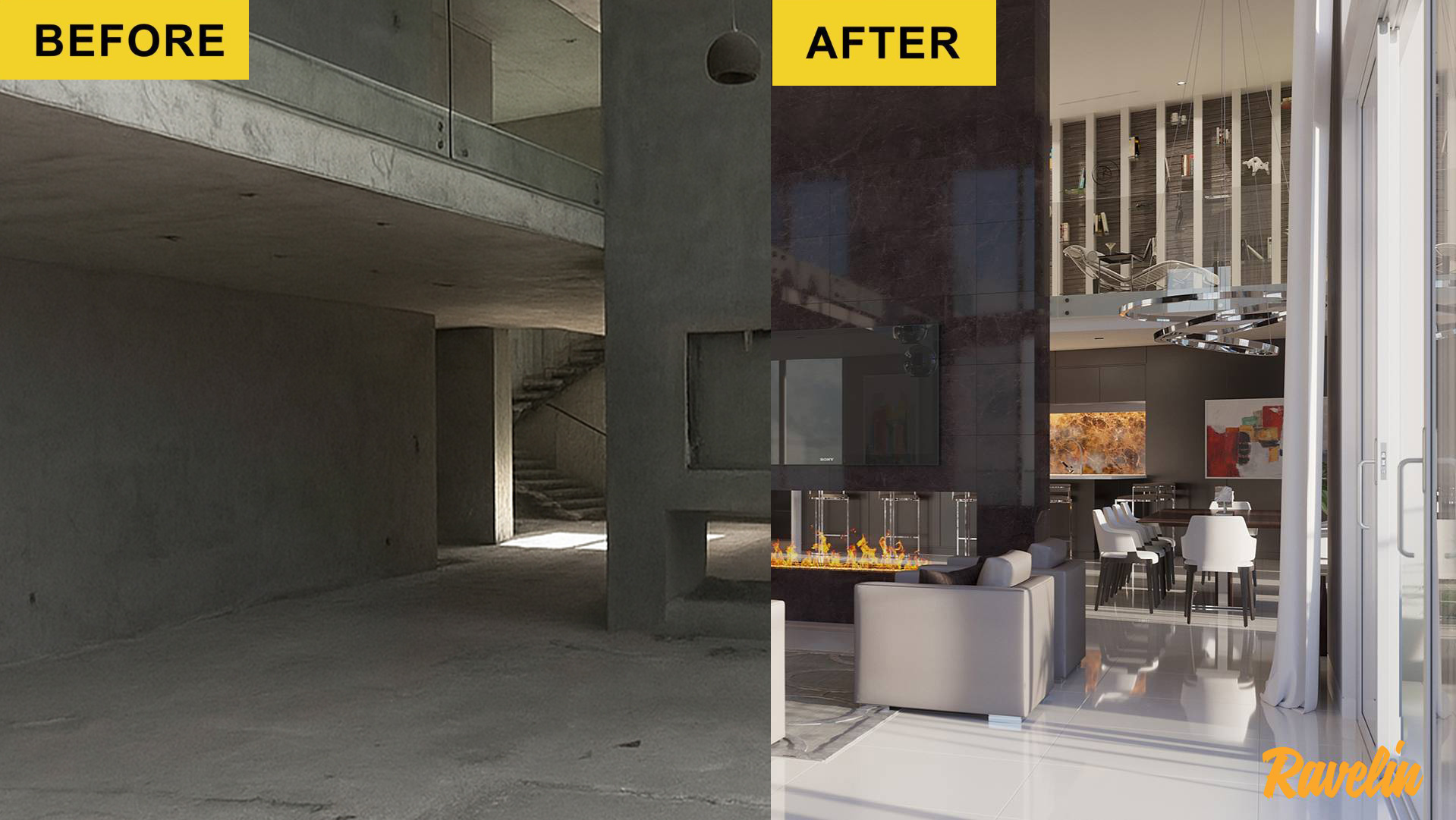How to Choose the Right 3D Rendering Company for Your Business
Imagine this: you're pitching a sleek, modern high-rise to a real estate investor. The blueprint is solid, the location is premium — but your presentation includes nothing but floor plans and jargon-heavy descriptions. The investor squints, nods politely... and walks away.
Now rewind. Same project. But this time, you open with a cinematic flythrough of the rooftop pool, golden light pouring across glass façades, trees swaying gently in the background. The investor leans in. They’re already sold — and construction hasn’t even begun.
That’s the power of choosing the right 3D rendering partner. The right studio doesn’t just produce images — they translate ideas into visual emotions, spark trust, and turn “maybe” into “when do we start?”
Whether you're an architect trying to win a design competition or a real estate developer closing million-dollar deals, picking the right 3D rendering team is no longer optional — it’s strategic. But with hundreds of agencies shouting promises, how do you find the one that truly delivers?
Let’s break it down, step by step.
Why Choosing the Right 3D Rendering Studio Matters
Visuals as a Business Asset
Renderings aren’t just pretty pictures — they’re silent salespeople working 24/7. The right visuals can get your project published in magazines, approved by zoning committees, and even trending on Instagram. A great rendering grabs attention like a well-dressed person at a party: you don’t need to explain — people just notice.
In architecture and real estate, first impressions happen long before the first brick is laid. When your design is brought to life through cinematic lighting, realistic materials, and just the right camera angle, clients don’t just see the building — they feel it.
The Impact of High-Quality Renderings on Sales and Communication
High-quality visuals bridge the gap between technical drawings and emotional understanding. Developers use them to pre-sell units. Architects use them to win competitions. Brokers use them to get clients to book a tour.
Ever noticed how a listing with basic photos gets ignored, while a 3D visual with mood and storytelling racks up inquiries? That’s not luck — that’s strategy. The right rendering partner makes your vision not just understandable, but desirable.

Define Your Project Goals and Requirements
Understand Your Project Type and Scope
Before you even open Google to search for a 3D studio, pause and get clear on what you're building — and why. Is it a luxury villa in the hills, or a large-scale residential block in a developing district? Each type demands a different rendering approach.
Some studios shine with minimalist interiors, others excel at aerial views of massive developments. Knowing whether you need one hero shot or a whole visual campaign saves time — and spares you from mismatched expectations.
Know the Desired Output Format (Images, Animations, VR)
Do you need crisp still images for brochures? Or a walkthrough animation for a client pitch? Maybe even a full virtual tour for your website? These are not just bells and whistles — they shape the entire production pipeline. Be specific. A 10-second cinematic video and a 360° interactive tour don’t cost the same, and not every studio does both well. The clearer your goal, the better your result.
Set Realistic Deadlines and Budget Expectations
We all want it yesterday, and preferably under budget. But rendering — good rendering — is a craft. Unrealistic deadlines often lead to compromised quality or missed expectations. Discuss timelines upfront. If your project is complex, it might need multiple revision rounds or layered lighting setups. And when it comes to budget, remember: you're not just buying images — you're investing in persuasion.

Key Factors to Consider When Selecting a 3D Rendering Company
Portfolio Quality and Style Match
Don’t just skim their homepage. Dive into their portfolio like a detective. Are their visuals polished or plastic-looking? Do their interiors feel lived-in or like showroom dolls? Most importantly: does their style resonate with yours?
A studio might be technically excellent, but if all their work screams ultra-minimalist Scandinavian and you're designing a neo-classical mansion — it’s not a match.
Technical Expertise and Software Used
Behind every stunning render is a powerhouse of software. From 3ds Max and V-Ray to Unreal Engine and Corona — the tools matter. They affect not just how the image looks, but how flexible and efficient the team is when last-minute edits hit.
Ask about their pipeline. If they can’t explain it in simple terms, that’s a red flag. You don’t need to be a tech guru — just make sure they are.
Industry Experience (Real Estate, Architecture, Product Design, etc.)
Experience in your specific domain means fewer explanations, fewer mistakes, and better intuition. A studio used to working with architects will know what a LOD 300 model means. A team with real estate experience will suggest the perfect dusk shot to make your condo irresistible.
They won’t just render your project — they’ll understand it.
Turnaround Time and Workflow Efficiency
Is their process fast and structured, or vague and chaotic? A good rendering company has a clear system: briefing → drafts → feedback → delivery. No “we’ll see how it goes.”
Ask how long it usually takes from start to final delivery. If they hesitate or say “it depends” without follow-up questions, think twice.
Communication and Collaboration Process
Do they ghost you for days? Do you need to write three emails just to get a draft update? A responsive team that communicates clearly — even in tight deadlines — is worth its weight in gold.
Look for signs of strong project management: shared folders, feedback tools, weekly updates. You're not just buying images — you're entering a creative partnership.
Revisions Policy and Flexibility
Revisions are part of the process. But how many rounds are included? What happens if you need a last-minute change before a client pitch?
A transparent policy saves everyone’s nerves. Studios that bake flexibility into their workflow are more reliable in the long run — because nothing ever goes 100% to plan.

Red Flags to Avoid
Unrealistically Low Pricing
If a deal looks too good to be true — it probably is. Sure, everyone loves a bargain. But when a studio offers full exterior renders for the price of a lunch, you’re not saving — you’re gambling.
Low prices often mean corner-cutting: reused models, generic lighting setups, or overseas freelancers with no creative supervision. You'll pay for it later — in missed deadlines, redos, or worse: client embarrassment.
Poor Communication or Delayed Responses
If they take three days to respond during the sales process, imagine how slow it’ll be once they’ve got your money. Smooth communication is a pillar of creative work. You want a team that asks smart questions, keeps you updated, and doesn't vanish when revisions start.
Test their responsiveness early. A good studio treats communication as part of the craft — not an afterthought.
Inconsistent Style or Outdated Portfolio
Some studios show a mix of breathtaking and... mediocre. Others haven’t updated their portfolio since 2018. That’s a sign either of inconsistency or low demand — neither is ideal.
Consistency shows professionalism. It means they have a workflow that delivers results every time — not just when the stars align.
Lack of Transparency in Workflow or Terms
You ask about turnaround time, and they say “depends.” You request pricing details, and get a vague range. These are not mysterious artists — they’re vendors providing a professional service. You deserve clarity.
A trustworthy studio lays out how projects are handled, what’s included, what’s not, and what happens if something goes wrong.

Questions to Ask Before Signing a Contract
What’s Included in the Quoted Price?
Not all quotes are created equal. Some include lighting setup, post-production, revisions, and final export. Others cover... well, just the raw render. Ask directly: “What exactly is included in this price?” Will they model from scratch? Are they using stock assets? Are you getting drafts or only the finals? Clear answers prevent painful surprises later.
How Many Rounds of Revisions Are Included?
Revisions are where the magic — and the frustration — often happens. Maybe the client wants a red sofa instead of beige, or the lighting feels too cold. Good studios expect this. Great ones build it into their process. But unlimited revisions? That’s a unicorn. Get clarity: is it one round, two? And what counts as a revision versus a rework?
What Is the Typical Turnaround Time?
Speed matters — especially in the fast-moving world of real estate. Whether you need visuals for an investor deck or a competition deadline, knowing how long it takes from first brief to final render is crucial.
Ask for examples from past projects. And if they say “it depends,” they’d better follow it with a timeline template or case study.
How Will the Team Communicate During the Project?
Are you exchanging emails in the dark? Or do you have a shared Trello board, Slack thread, or even a weekly call? Creative work thrives on feedback. The smoother the communication, the fewer the revisions. Make sure your studio isn’t stuck in 2010 with clunky tools and slow replies.
Do They Provide NDA or Confidentiality Agreements?
Working on a top-secret competition entry? Or visualizing a yet-to-be-launched development? Then confidentiality is a must. A professional studio will happily sign an NDA. If they hesitate or avoid the topic, that’s a red flag. Your designs — and your client’s trust — are worth protecting.

Comparing Freelancers vs. Full-Service Rendering Studios
Pros and Cons of Hiring Freelancers
Freelancers can be fantastic — agile, affordable, and often incredibly talented. They're great for smaller projects or when you want a personal touch. Think of them like solo musicians: nimble, expressive, but limited in scale.
The flip side? They’re one person. If they fall sick, go on vacation, or get overwhelmed with another job — your deadline slips. Plus, managing everything from modeling to revisions yourself can quickly become a headache.
Advantages of Working with a Dedicated Studio
A full-service studio is a well-oiled machine. You get a team of specialists — modelers, texture artists, lighting pros, project managers — each focused on their piece of the puzzle. They handle bigger projects with tighter timelines and offer consistency across multiple views and formats. Like a full orchestra, they deliver harmony at scale. You also get structured communication, backup if someone’s unavailable, and usually a smoother ride overall.
Which Option Suits Your Project Best?
It boils down to complexity, budget, and timeline. A single cozy interior? A freelancer might be perfect. A high-rise development with 10 visuals, 1 animation, and a looming deadline? Call the studio. The smartest clients don’t pick based on price alone — they choose the partner that best fits the stakes of the project.

How to Evaluate the Studio’s Workflow and Client Experience
Onboarding and Briefing Process
Your first interaction with a studio should feel like onboarding, not interrogation. Do they guide you through the briefing process? Ask smart questions? Share a checklist? A good start sets the tone. If they just say “send what you have” and jump in, that’s a red flag. A strong studio will ask for CAD files, mood references, target audience insights — they care about the story, not just the scene.
Visualization Pipeline: From Sketch to Final Render
Ever felt like you're blindly waiting for a render that just shows up in your inbox one day? That shouldn’t happen. Great studios show you the journey: from massing models to material previews, lighting drafts to color correction. They let you peek behind the curtain — not to overwhelm, but to reassure. Each stage has a purpose, and you stay in the loop the whole time.
Review, Feedback, and Delivery
How do they handle feedback? Is it structured or chaotic? Do they listen carefully, or just rush to “finalize”? Look for a process that includes draft reviews, written comments, and space for visual markup. Final delivery should be clean, labeled, and in all the formats you need — from high-res print to lightweight web versions.

Additional Services That Add Value
3D Animation and Walkthroughs
Still images are powerful, but motion brings magic. A smooth camera glide through a future penthouse, sunlight spilling over kitchen counters, footsteps echoing down the hallway — this is more than rendering. It’s a cinematic experience.
Animations help clients imagine life in the space. They’re especially persuasive for high-ticket properties or public presentations where attention spans are short and impact must be immediate.
Virtual Tours and VR Solutions
Virtual tours are the new open house. Whether it’s a 360° experience for desktop or a full VR headset walkthrough, these tools give viewers agency — they explore what they want, how they want. For developers, this means global reach without a sales office. For architects, it means stakeholder approval before a single brick is laid.
Photomontages and Marketing Assets
Sometimes, a project isn’t built in a vacuum. You need to show how it lives within its real-world surroundings — the skyline, the street, the sunset. That’s where photomontages shine. By blending CGI with drone photography or real-life shots, you create credibility and atmosphere in one frame. It’s also marketing gold for brochures, billboards, and ad campaigns.
360° Panoramas and Interactive Visuals
Want your prospects to linger? Give them something to play with. Interactive visuals — like 360° rooms or clickable hotspots — turn passive viewers into engaged participants. These tools are more than bells and whistles; they’re modern communication assets that bridge the gap between imagination and reality.

Making the Final Decision
Compare Shortlisted Studios
By now, you’ve likely gathered a handful of promising candidates. Don’t rush — this is the most important part. Line them up. Compare not just portfolios, but communication style, turnaround promises, pricing clarity, and added services. Think of it like speed dating for your business. Who listens better? Who follows up fast? Who gets your vision without over-explaining?
A good rendering is memorable. A good studio relationship is scalable.
Request a Test Project (If Necessary)
Still on the fence? Ask for a test project — even a small paid one. It’s the fastest way to separate real pros from smooth talkers. You’ll see how they handle feedback, how creative they are, and whether their final result matches your expectations. Yes, it’s an extra step. But if you’re planning a long-term partnership or a major campaign, a test is cheaper than a failed launch.
Prioritize Long-Term Partnerships Over One-Off Deals
Sure, you might need “just one render” today. But success in architecture and real estate is about momentum — and momentum demands consistency.
Studios that know your aesthetic, workflow, and business model become strategic allies. They don’t just visualize your projects — they help shape your brand identity. Treat them like a partner, not a vendor, and watch your visuals (and results) level up.

Conclusion: Invest Wisely in Visualization to Maximize Project Success
Choosing a 3D rendering company isn’t just a line item on a budget — it’s a turning point in how your projects are perceived. The right studio doesn’t just make things “look good.” They make them feel real, persuasive, and worth investing in.
In a market where buyers scroll fast and decisions are made at a glance, your visuals speak before you do. So make them count. Get clear on your goals. Vet your partners like you would an architect or engineer. Ask the hard questions. And when you find a team that gets it — truly gets it — hold on tight.
Because in the world of architecture and real estate, winning clients starts with showing them the future… beautifully.




